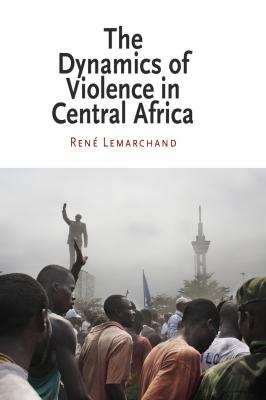The Dynamics of Violence in Central Africa. Rene Lemarchand
Читать онлайн.| Название | The Dynamics of Violence in Central Africa |
|---|---|
| Автор произведения | Rene Lemarchand |
| Жанр | Учебная литература |
| Серия | National and Ethnic Conflict in the 21st Century |
| Издательство | Учебная литература |
| Год выпуска | 0 |
| isbn | 9780812202595 |
OTHER BOOKS BY RENÉ LEMARCHAND
Political Awakening in the Congo
Rwanda and Burundi
African Kingships in Perspective (editor)
American Policy in Southern Africa: The Stakes and the Stance (editor)
Political Clientelism, Patronage and Development ( coeditor with S. N. Eisenstadt)
The Green and the Black: Qadhafi's Policies in Africa (editor)
Burundi: Ethnic Conflict and Genocide
The Dynamics ofViolence inCentral Africa
RENÉ LEMARCHAND
PENN
University of Pennsylvania Press
Philadelphia
National and Ethnic Conflict in the 21st Century
Copyright © 2009 University of Pennsylvania Press
All rights reserved. Except for brief quotations used for purposes of review or scholarly citation, none of this book may be reproduced in any form by any means without written permission from the publisher.
Published by
University of Pennsylvania Press
Philadelphia, Pennsylvania 19104-4112
Printed in the United States of America on acid-free paper
10 9 8 7 6 5 4 3 2 1
Library of Congress Cataloging-in-Publication Data
Lemarchand, René.
The dynamics of violence in central Africa / René Lemarchand.
p. cm. — (National and ethnic conflict in the twenty-first century)
Includes bibliographical references and index.
ISBN 978-0-8122-4120-4 (alk. paper)
1. Africa, Central—Politics and government—1960– 2. Africa,
Central—Economic conditions—1960– 3. Africa, Central—Ethnic
relations—Political aspects. 4. Political violence—Great Lakes Region
(Africa) 5. Geopolitics—Great Lakes Region (Africa) 6. Genocide—Great
Lakes Region (Africa) I. Title.
DT352.8.L46 2008
967.03—dc22 2008018612
In memory of Lando Ndasingwa, a man of rare integrity and a friend of many years, savagely murdered in Kigali on the first day of the Rwanda bloodbath, April 7, 1994, along with his Canadian wife and two children
Contents
Chapter 1. The Geopolitics of the Great Lakes Region
PART II. RWANDA AND BURUNDI: THE GENOCIDAL TWINS
Comparative Perspectives
Chapter 4. Genocide in the Great Lakes: Which Genocide? Whose Genocide?
Rwanda
Chapter 5. The Rationality of Genocide
Chapter 7. The Politics of Memory
Chapter 8. Rwanda and the Holocaust Reconsidered
Burundi
Chapter 9. Burundi 1972: A Forgotten Genocide
Chapter 10. Burundi at the Crossroads
Chapter 11. Burundi's Endangered Transition
PART III. THE DEMOCRATIC REPUBLIC OF THE CONGO: FROM FAILED STATE TO FRAGILE TRANSITION
Chapter 12. A Blocked Transition: Zaire in 1993
Chapter 13. Ethnic Violence, Public Policies, and Social Capital in North Kivu
Chapter 14. The DRC: From Failure to Potential Reconstruction
Chapter 15. The Tunnel at the End of the Light
Chapter 16. From Kabila to Kabila: What Else Is New?
Preface
The one duty we owe to history is to rewrite it.—Oscar Wilde
The Great Lakes region matters. It matters because of its vast territorial expanse and the many borders it shares with neighboring states, and the ever-present danger of violence spilling across boundaries. It matters because the Congo's huge mineral wealth translates into a uniquely favorable potential for economic development. While claiming the largest deposits of copper, cobalt, diamonds and gold anywhere in the continent—it is not for nothing that the Belgians called it a “geological scandal”—more than 60 percent of its population lives below the poverty line. More importantly, it matters because of the appalling bloodshed it continues to experience. Public revulsion over the Rwanda genocide has all but overshadowed the far greater scale of the human losses suffered in eastern Congo. The death toll between 1998 and 2004 was estimated to be nearly 4 million.1 If one adds the killings in Rwanda and Burundi since 1994, one reaches the staggering figure of approximately 5.5 million. To this day as many as 38,000 die every month of war-related causes. In many parts of the country, rape has become the weapon of choice of militias. The unspeakable has become commonplace. This in itself is a sufficient reason to devote serious attention to an area that is all too often dismissed as a latter-day version of the Heart of Darkness, entirely beyond redemption.
At the root of the misconceptions and prejudices that
